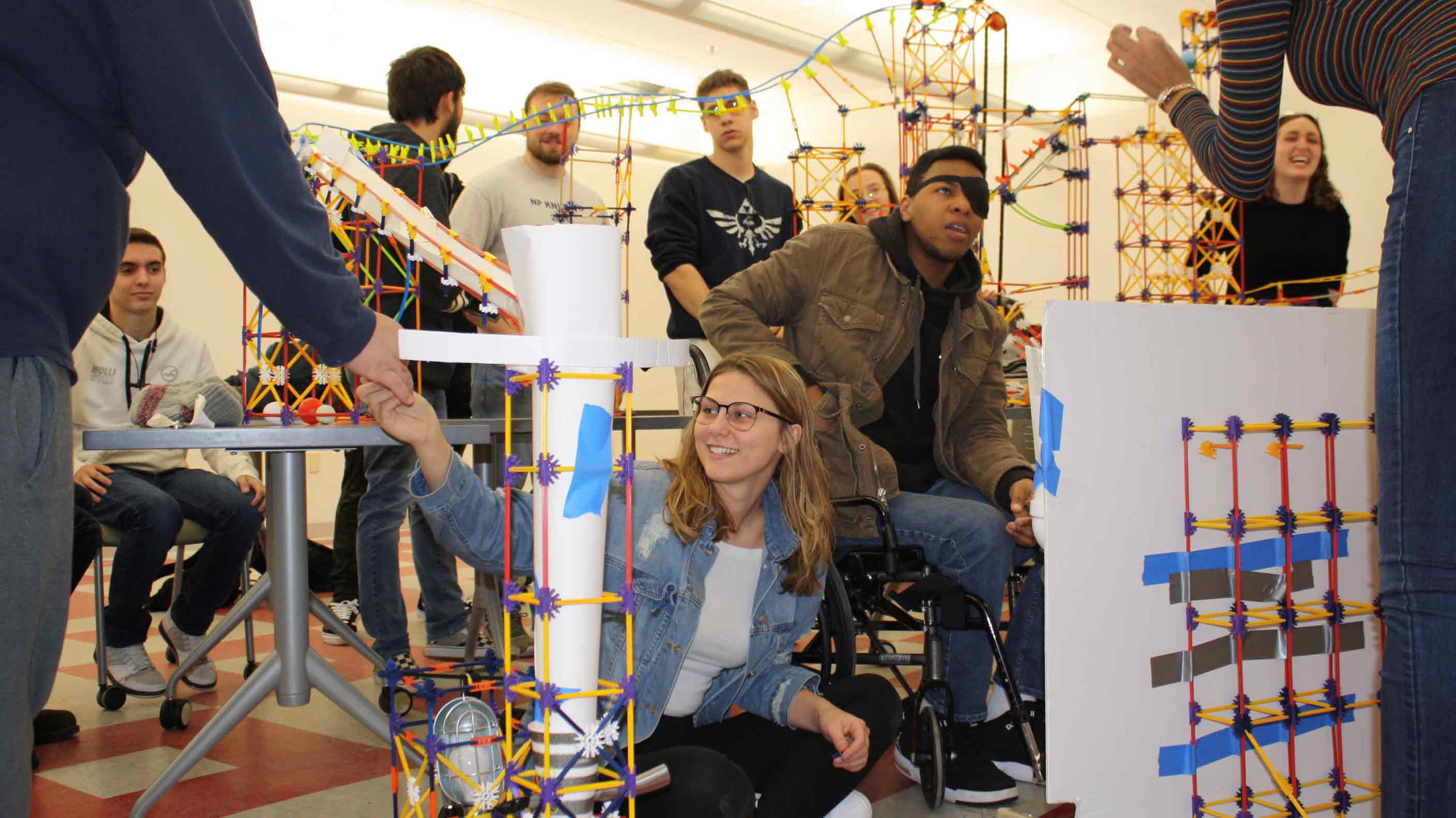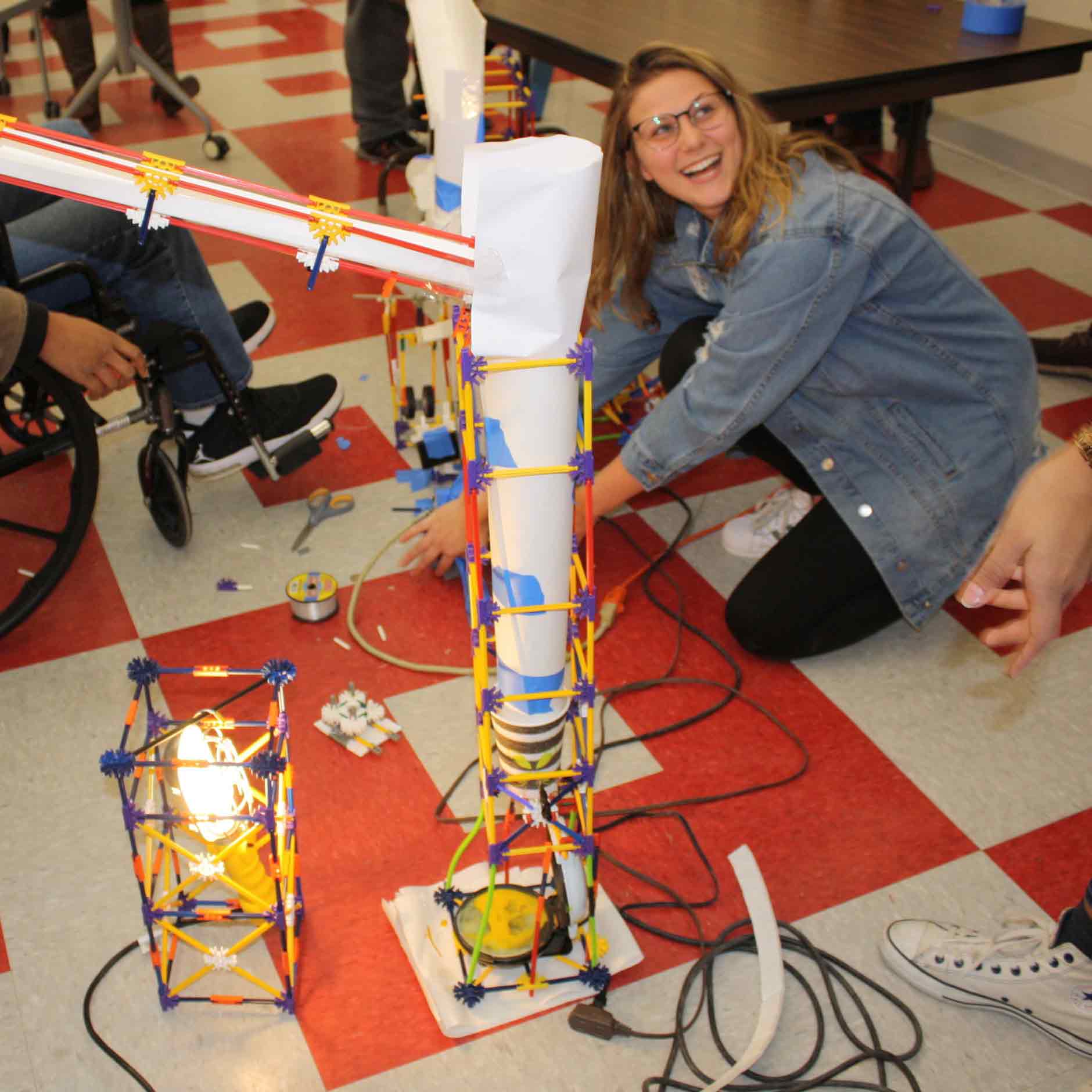
Students in Engineering 102 get creative in order to cook an egg as part of their final project.
About 40 students in Engineering 102 completed their final project of the semester on November 28, frying an egg in the process.
Bill Brownlowe, associate professor of Engineering, described the K’nex contraption that dominated the lab with brightly colored connected bits of plastic, held together in places with duct tape, bits of twine and poster board.
“It’s a Rube Goldberg machine, where one process drives the next, which drives the next, and so on,” said Brownlowe. “In the end, each step leads to a fried egg. We joked that it should be called, ‘How to cook an egg the hard way.’”
Goldberg was an American inventor, sculptor, author, engineer and cartoonist, best known for drawings of simple tasks being accomplished in complicated ways.
The students divided into design teams, and used their imaginations to create the machine over the course of nine days, changing things as they went along. Objects brought from home—funnel, knife, child’s scissors, small rubber duck, lights, balls—added fun elements.
Dean of Science, Technology, Engineering and Mathematics Jamie Bretz was on hand to witness the effort.
“These types of projects are so valuable because the students get to apply all they’ve learned in class,” he said. “Learning is more than being in the classroom and listening. It’s about doing.”
After several trial runs throughout which students tinkered with the process, the final countdown led to a 12-second maneuver involving a ping pong ball going one way and a golf ball going another. The former led to a “power station,” which flipped a switch turning on a small, round hot plate. The golf ball veered off in a second direction and set a cart off on a roller coaster ride that ended by pushing an egg down a chute and into a cup where it was cracked by a knife. The egg dribbled out of holes in the bottom of the cup, designed to hold back shell fragments, and onto the hot plate, where it was cooked to perfection.

The students and faculty erupted into cheers and applause, and Brownlowe offered up, “100s all around!”
Several students stepped forward to explain their approach, and Kayla Landin, who spearheaded the project, spoke for the group: “We considered everyone’s ideas, which wasn’t easy, since there were 42 people—that was the most challenging thing. But everyone helped [in some way], and Prof. Brownlowe said to use whatever we wanted, which was fun, and everyone contributed.
“We all learned that everything has to flow. Each part has to work on its own and then they all have to work exactly right together. To me, this is the coolest thing of the semester.”
